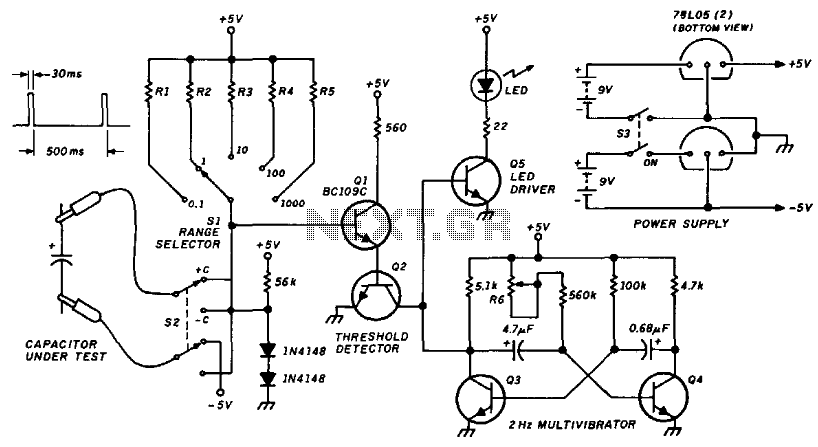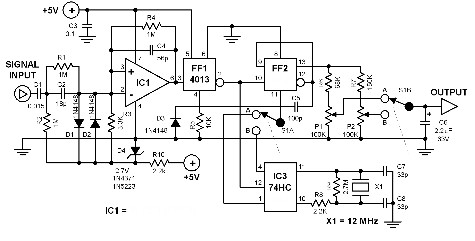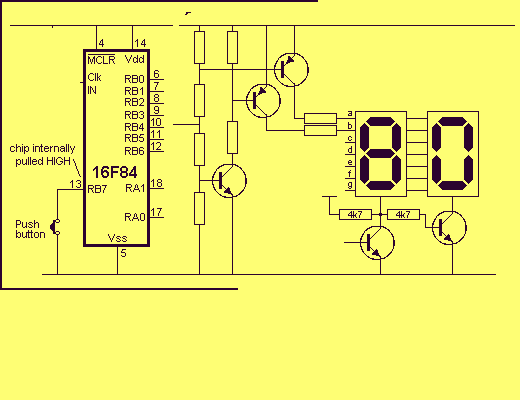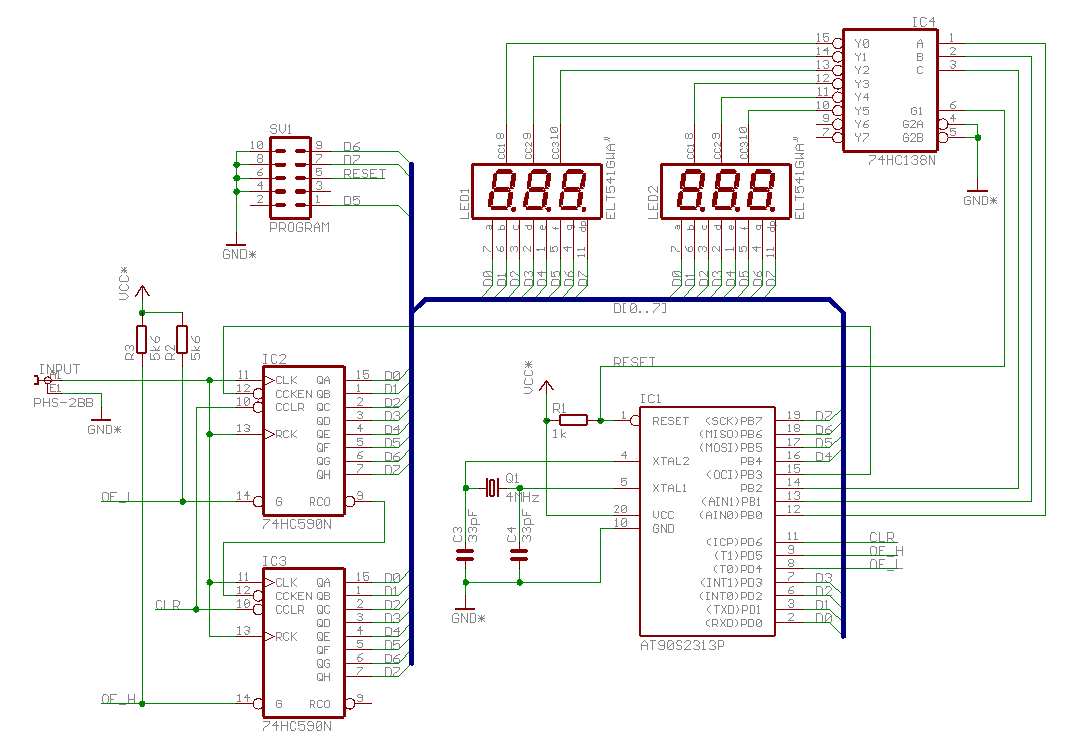
Microfarad Counter

This circuit measures capacitance by the time it takes for an unknown capacitor to reach 6.32 V (which is 63% of 10 V or one time constant, 1RC) when charged through resistor R. The LED, used as a timebase, is pulsed by transistors Q3, Q4, and Q5. By counting seconds (two flashes per second) until the threshold detector formed by Q1 and Q2 stops the count, the capacitance in microfarads can be directly read. Resistors R2, R3, R1, and R5 can be selected from convenient values, such as 1 kΩ, 10 kΩ, 100 kΩ, 1 MΩ, or 10 MΩ.
This capacitance measurement circuit operates on the principle of charging an unknown capacitor through a known resistor, allowing the time constant to be derived from the voltage across the capacitor. The charging process is monitored by the LED, which provides a visual indication of the timing. The transistors Q3, Q4, and Q5 function as a pulsing mechanism, generating a series of flashes that serve as a time reference.
The threshold detection is accomplished using Q1 and Q2, which work together to determine when the voltage across the capacitor has reached the specified threshold of 6.32 V. Once this threshold is reached, the counting mechanism halts, allowing the user to read the elapsed time in seconds. The frequency of the LED flashes, set at two per second, translates this time into a straightforward microfarad reading.
The choice of resistors R2, R3, R1, and R5 is flexible, enabling the circuit to be tailored for various applications. The values can be chosen from a standard range, allowing for adjustments based on the expected capacitance to be measured. This adaptability ensures that the circuit can accommodate different capacitors while maintaining accuracy in the measurement process. The circuit provides a practical solution for capacitance measurement, combining simplicity and effectiveness in a compact design. This circuit measures capacitance by the time it takes an unknown capacitor to reach 6.32 V (10 V 63% or 1RC time const ant) when charged through resistor R. The LED used as a timebase is pulsed by Q3, Q4, and Q5. By counting seconds (two flashes per second) until threshold detector Q1/Q2 stops the count, you can directly read the number of microfarads. RXf R2, Rz, Ri, and R5 can be any convenient values, such as 1 KOhm, 10 KOhmhm, 100 KOhmhm, 1Mohm, 10Mohm.
This capacitance measurement circuit operates on the principle of charging an unknown capacitor through a known resistor, allowing the time constant to be derived from the voltage across the capacitor. The charging process is monitored by the LED, which provides a visual indication of the timing. The transistors Q3, Q4, and Q5 function as a pulsing mechanism, generating a series of flashes that serve as a time reference.
The threshold detection is accomplished using Q1 and Q2, which work together to determine when the voltage across the capacitor has reached the specified threshold of 6.32 V. Once this threshold is reached, the counting mechanism halts, allowing the user to read the elapsed time in seconds. The frequency of the LED flashes, set at two per second, translates this time into a straightforward microfarad reading.
The choice of resistors R2, R3, R1, and R5 is flexible, enabling the circuit to be tailored for various applications. The values can be chosen from a standard range, allowing for adjustments based on the expected capacitance to be measured. This adaptability ensures that the circuit can accommodate different capacitors while maintaining accuracy in the measurement process. The circuit provides a practical solution for capacitance measurement, combining simplicity and effectiveness in a compact design. This circuit measures capacitance by the time it takes an unknown capacitor to reach 6.32 V (10 V 63% or 1RC time const ant) when charged through resistor R. The LED used as a timebase is pulsed by Q3, Q4, and Q5. By counting seconds (two flashes per second) until threshold detector Q1/Q2 stops the count, you can directly read the number of microfarads. RXf R2, Rz, Ri, and R5 can be any convenient values, such as 1 KOhm, 10 KOhmhm, 100 KOhmhm, 1Mohm, 10Mohm.





